New York City Hall
Introduction
Text-to-speech Audio
Images
Outside of City Hall's main entrance.
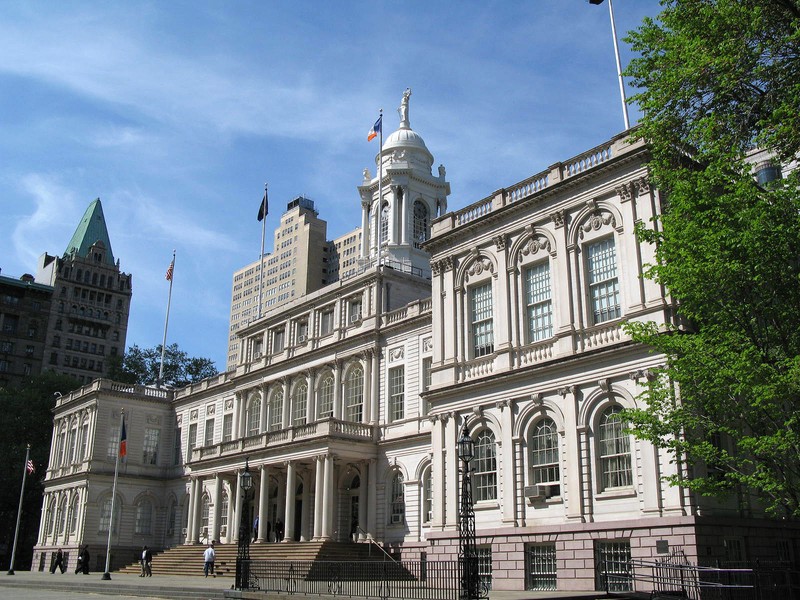
The grand staircase leading to the second floor.
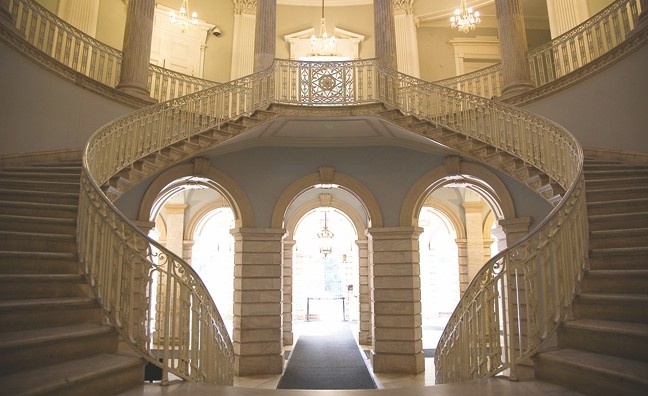
Supporting pillars of the coffered dome.
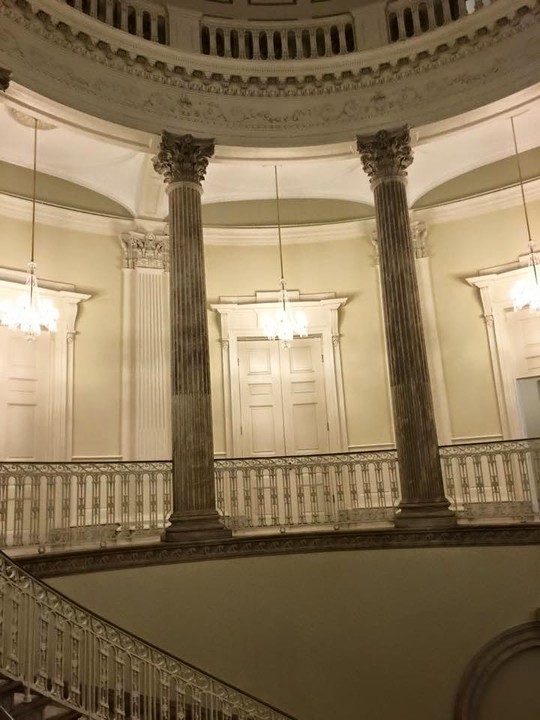
The view of the coffered dome from the second floor.
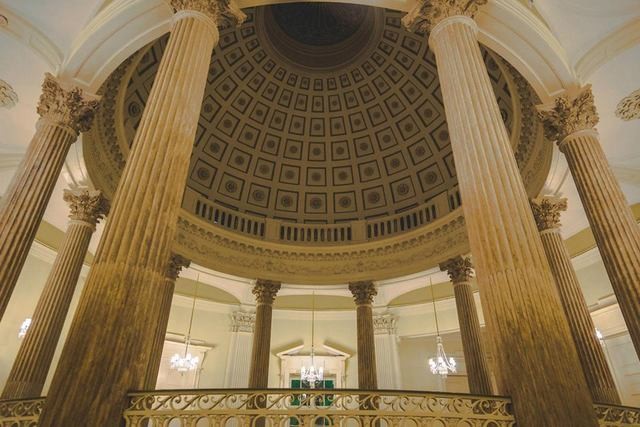
Geroge Washington's desk in the Governor's Room.
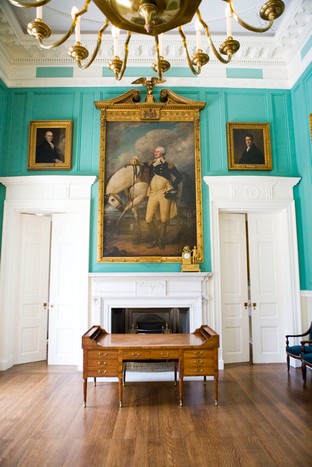
Backstory and Context
Text-to-speech Audio
Before there was the City Hall we see today, the work of the government of New York City was done in the original city hall. Built in 1700, it was located at the corner of Wall Street and Nassau Street. It was determined that the building needed to be replaced, and a competition was held to select an architect to design the new City Hall. In 1802, the designs of John McComb, a native New Yorker, and Joseph Francois Mangin, a French émigré, won the competition.
Work began immediately. Construction took nine years, beginning in 1803 and continuing into 1812. However, it took several more years until the building was ready to be inhabited. By blending the international flavor of both men's influences, the interior can be described as American Georgian while the exterior is French Renaissance. The new City Hall is three stories high with a central pavilion that is flanked by two projecting wings with large arched windows, delicate ornamental swags, and decorative Corinthian and Iconic style columnns and pilasters.
You enter City Hall by ascending a large stone stairway leading to the main entrance that has been the scene of many important events throughout the last two centuries. Upon entering City Hall, a grand marble staircase sweeps up to the one-story portico fronting the building. The roof of the portico is capped by a balustrade, forming a balcony outside the Governor’s Room where five large arched windows soar to impressive heights. The rotunda dominates the interior and is dramatically encircled by a keystone-cantilevered staircase. Ten columnns on the second floor support the coffered dome that is modeled after the one in the Pantheon in Rome. A cupola rises above the attic where a copper statue of Justice majestically watches over the city below.
City Hall's most notable room, the Governor's Room, has served as a museum and reception room. It houses one of the most important collections of 19th century American portraiture as well as a collection of historic furnishings, including George Washington's desk and pieces by Charles Christian and Honoré Lannuier. Many distinguished guests have visited City Hall, including the Marquis de Lafayette, Albert Einstein, President James Monroe, Dr. Martin Luther King, Jr., and Abraham Lincoln whose body lay in state there for two days. Over the years, it has been refurbished and restored many times including a redecoration by Bernstein and Bernstein from 1905 to 1907.
Sources
Ermengem, Kristiaan Van. "City Hall, New York City." A View On Cities. Accessed March 04, 2017. http://www.aviewoncities.com/nyc/cityhall.htm.
Boys, Bowery. "Epicenter: The glorious history of New York City Hall." The Bowery Boys: New York City History. October 13, 2015. Accessed March 04, 2017. http://www.boweryboyshistory.com/2009/11/epicenter-history-of-new-york-city-hall.html.
"Design Commission - Governor's Room." NYC. Accessed March 04, 2017. http://www1.nyc.gov/site/designcommission/public-programs/city-hall/governors-room.page.
